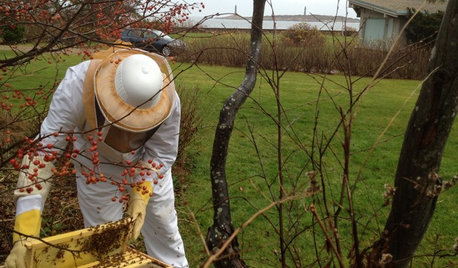Need Some Help Saving My Lawn
kazbachris
13 years ago
Related Stories

GARDENING GUIDES8 Unthirsty Plants Help You Save Water in Style
Spend less effort and money on your landscape with drought-tolerant and native plants that liven up your yard
Full Story
LANDSCAPE DESIGNGet Along With Less Lawn — Ideas to Save Water and Effort
Ditch the mower and lower your water bill while creating a feast for the eyes with diverse plantings and gathering places
Full Story
LANDSCAPE DESIGNWater-Saving Landscaping Ideas for Traditional Homes
Who says you need a lawn and roses in front of your traditional house? Try some of these drought-tolerant beauties instead
Full Story
EARTH DAYThe Case for Losing the Traditional Lawn
Work less, help the environment and foster connections by just saying no to typical turf
Full Story
LIFEYou Said It: ‘You Can Help Save the Bees’ and More Houzz Quotables
Design advice, inspiration and observations that struck a chord this week
Full Story
FUN HOUZZDecorated Houses Help Save a Detroit Neighborhood
Art's a start for an inner-city community working to stave off urban blight and kindle a renaissance
Full Story
BEFORE AND AFTERSSee 6 Yards Transformed by Losing Their Lawns
Wondering whether a turf lawn is the best use of your outdoor space? These homeowners did, and they found creative alternatives
Full Story
SAVING WATERHouzz Call: Are You Letting Go of Your Lawn?
Many facing a drought are swapping turf for less thirsty plantings. If you’re one of them, we’d like to hear about it
Full Story
MOST POPULARMeet a Lawn Alternative That Works Wonders
Carex can replace turfgrass in any spot, is low maintenance and adjusts easily. Add its good looks and you’ve got a ground cover winner
Full Story
LANDSCAPE DESIGN15 Great Ideas for a Lawn-Free Yard
End the turf war for good with hardscaping, native grasses and ground covers that save water and are easier to maintain
Full StorySponsored
Custom Craftsmanship & Construction Solutions in Franklin County






Kimmsr
gargwarb
Related Professionals
Garden City Landscape Architects & Landscape Designers · Graham Landscape Architects & Landscape Designers · Quincy Landscape Architects & Landscape Designers · Walnut Landscape Architects & Landscape Designers · Canyon Lake Landscape Contractors · Kahului Landscape Contractors · Natick Landscape Contractors · North Chicago Landscape Contractors · North Ridgeville Landscape Contractors · Paso Robles Landscape Contractors · Glenvar Heights Swimming Pool Builders · Charlotte Fence Contractors · Crofton Fence Contractors · Dundalk Fence Contractors · Statesville Fence ContractorskazbachrisOriginal Author
gargwarb
dchall_san_antonio
Kimmsr